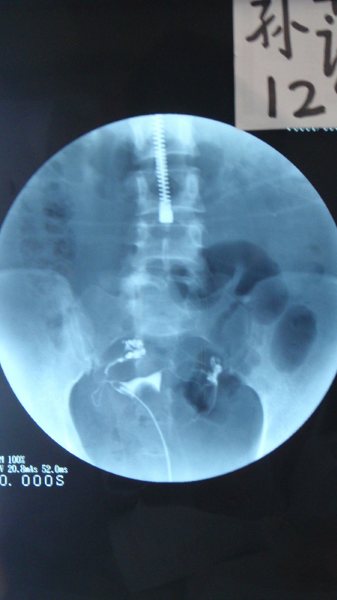Beijing Hospital: Chinese Medicine Cancer Ward, part 3
Friday:
Master class with Dr Wan.
We went around the ward and spoke to a couple of patients with Dr Wan and then found a room and met patients one after the other. I was inspired. This doctor was very calm, friendly and absolutely the most busy person I’d seen in the hospital so far.
Here’s some of the patients and cases we went through and an idea to why people were seeking Chinese medicine:
The first one was a 61 Y/old breast cancer patient with a high risk malignant tumour operated on in May 2010. Now seeking Chinese medicine as unable to afford the 20,000 Yuan per treatment for western medicines privately. Receiving Chemotherapy and Radiotherapy.
Herbs given to Tonify Qi and Promote Meridian (basically to support the body) through IV drip:
Zhi (toasted/fried) Huang Qi 30g
Wu Wei Zi
Chuan Xiong 10g
Chi Shao Yao 10g
Di Long 10g
Rou Gui 10g
Du Huo 10g
Gu Sui Bu 10g
Bu Gu Zhi 10g
Yin Yang Huo 10g (Horny Goat Weed, Increase Estrogen, Regulate Ren Mai Channel)
Huang Bai 10g
The following patients were consulted in a room with a large table with 12 chairs around it. The doctor sitting at one corner and 3 or 4 intern doctors sitting around studying.
The following case I found to be absolutely shocking. It was discussed as plainly as I write here, but the consequences are a book of emotions.
49 Y/old, Right breast cancer. March operation removed 6x5cm tumour. After operation 6 cycles of Chemotherapy. Since then operation not cleared cancer. Spread to Lung and Lymph. Tomoxafin (Chinese chemotherapy drug) given after surgery. Herbs given to treat general side effects of muscle and joint stiffness and sometimes pain, irritability, feels fever. However patient had previous history of cysts and has fibroids on ovaries now. Due to toxic nature of Tomaxafin another side effect with this previous history is cancerous cysts to ovaries. Doctor recommended removal of ovaries.
Further the patient lifted her top to show the operated right breast. Under a few large plasters which were removed a scar could be seen that was slow to heal, with fluid build up under the skin. Radiotherapy not being available at this time because the fluid build up would influence effectiveness.
Tongue was normal, but the Liver pulse was big and Spleen pulse was thready and deep.
A diagnosis was reached of Spleen Xue from the muscle and joint pain, Spleen not transforming fluid at the scar area and Liver pulse being big.
Modified (a lot) Chai Hu Shu Gan San formula was prescribed to Harmonise the Spleen and Liver:
Chai Hu 10
Bai Shao 15g
Chi Shao Yao 10g
Dang Shen 15g
Bai Zhu 10g
Fu Ling 15g For Damp, fluid
Zhu Ling 15g For Damp, fluid
Dang Gui 10
Bo He 15g
Da Zao 10g
Mu Dan Pi 10g Clear heat, help liquid absorption
Zi Cao 10g Clear heat, help liquid absorption
Fang Fang 10g (Hornet’s Nest, which I thought could only be used externally…)
Mu Gua 10g used for thousands of years to treat arthritis and leg edema ( not to be confused with Papaya or Pawpaw which share the same name spelling).
Si Guah 10g Loofah sponge
Qing Pi 10g
Ze Xie 10g
Another patient had esophageal ( the muscular tube which food passes down) carcinoma of 5cm (middle stage). 3cm being early stage. This being squamous carcinoma.
Signs and symptoms:
Difficult to drink water, on liquid food diet, emaciation, right chest and back pain, vomiting/ thick sticky phlegm, dry stool, constipation 4/5 days
Herbs were prescribed to reduce side effect of inflammation due to radiotherapy in this area.
The treatment principle was:
Harmonise Stomach,
Descend Rebellious Qi
Stop Vomit
Expand Chest,
Regulate Qi,
Stop Pain
Xuan Fu Dai Zhe Tang (heavily modified, almost completely different!)
Xuan Fu Hua 10
Dai Zhe She 30
Zhu Ru 10
Bai Zhu 10
Fu Ling 15
Chen Pi 10
Wei Ling Xian 10
Bai Ji 20
Shan Dou Gen 6
Gua Lou 30
Yu Jing 10
Ji Nei Jin 15 ( chicken innards!)
Hopefully this gives you and indication of the massive turn over of patients, the style of treatment and how herbs are prescribed. Members of the public arriving for consultation every five minutes in the “make do is best” environment. Most striking for me was how in this environment people are happier. We sat knee to knee with patient, doctor, fellow intern, family member and Chinese interns just studying near by. People came in and out of the room, the door was open. Everybody was reduced to just being human with no barriers. Spirit, camaraderie and existence without barrier. It reminds me of the London Blitz stories. Strangers sleeping next to each other in the London Underground to avoid destruction. Good will and human understanding stories abounding in times of difficulty. This Chinese hospital is at the forefront of an unseen, unknown blitz on human existence and at the rough, cutting edge between illness and death at close quarters everybody chooses good will, help, kindness and a smile.
































































